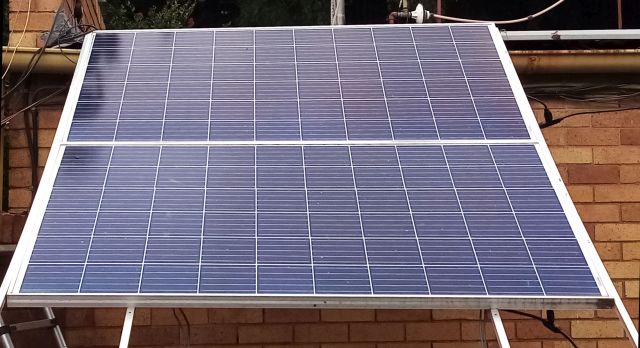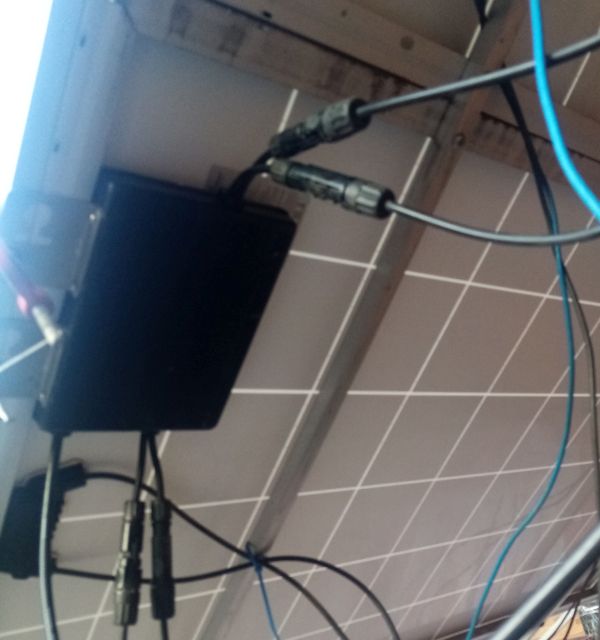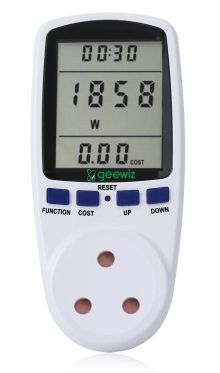
Cost effective solar systems for South African conditions

Cost effective two panel base load solar solution
Realities
- Lots of Sun Power during the day
- Most of South Africa is blessed with lots of sunny days. This solar energy can be easily captured and
converted to electrical energy using solar panels. The energy from the solar panels can efficiently
be converted to mains like energy and fed directly into your home to operate seemlessly your appliances.
- Increasing Eskom tariffs
- South Africa and generally the world is experiencing rapidly rising electricity tariffs. This partly is
due to the increasing cost of source hydro-carbons like coal, oil and natural gas.
- In April 2023. our supplier Eskom
will increase its tariff by 18 percent. In most years the tariff increase has been about ten percent.
- Once you have a solar system, that cost of energy is decreasing as the equipment needs no consummables
and has a long operating life, and you have paid the capital investment - so you are just funding the finance costs of the
solar installation.
- How gridtie inverters operate
- Grid tie inverter systems operate in conjunction with the mains provided by the municipality.The grid tie inverter
plugs into a wall outlet, in the same way that you plug in an appliance such as a heater, except that instead of
using energy, they add back energy into the network. They adjust the energy they supply such that all the energy
that is being gathered via the solar panels is used before any additional energy is bought from the municipality.
Any shortage of energy that is not provided by the solar system is supplied seemlessly from the municipal grid,
such as when you boil your kettle, start a motor or heat your geyser.
- Municipal metering cannot determine direction of flow
- The modern electronic meters used by the city council, both prepaid and post paid, were designed to measure the consumption
of power by the client. They never thought that the client might generate their own electricity and that any surplus
of power generated might flow back through the meter onto the grid. Hence they just measure the amount of
electricity flowing through the meter and not the direction of flow. This means that if you generate more solar
energy than you need, it will flow through the meter and you will be charged as though you consumed that energy even though
you were supplying the energy back onto the grid. Hence you want to design your first solar system to make sure that
you are always consuming all the energy you generate in your own property.
- There are power meters that can determine direction, but these are not normally fitted to houses as there is no scheme in South Africa at present where the city council will buy back electricity from residential properties.
- If you have a meter system that is the generation before the electronic meters, and has a rotating disc with
mechanical counters, this is ideal for solar systems as it does determine direction and any surplus will unwind the counter, effectively
letting you use the municipal grid as a battery to store your surplus and then use it at night.
- Load shedding
- South Africa at this time is burdened by load shedding, that is where Eskom turns off the power to an area for two hours at a time
in order to reduce the instantaneous power needed from the grid as the supply of energy is less than the demand. These two hour slots are repeated
often many times a day and so you might experience power blackouts for up to 8 hours in 24 hours.
- The above solar system will stop working when the power is disconnected and so is not going to help with load shedding.
- There are many solutions for loadshedding, which will generally involve a large battery, a seperate inverter (NOT gridtie) and a battery charger.
Load shedding is not a solar problem as you need to recharge the battery as soon as power is returned to your area and often this is at night.You want
your batteries fully charged as the next load shedding cycle is soon approaching.
- For loadshedding you want to choose which devices to keep powered up. Usually this will be your internet connections and possibly your DSTV decoder and TV
so that you can carry on with your entertainmment. For lighting there are some very clever solutions for load shedding that work independantly of your inverter.
- Base starter system
- The system we are suggesting is a small starter system that will get you into solar systems and from where you can expand once you have the experience.
It will have paid for itself in just four years and will from then on give you free electricity for its 25 year life. Once you have mastered the solar issues,
then you can expand your solar system.
- We call this system a base system as it is to deal with your normal energy requirements during the day. It is only contributing about
400-500 watts of energy which is consumed by your fridge, freezer, kettle. TV, internet connections, lighting, desktop computers, laptop computers, cellphone chargers, lawn mower, edge trimmer, pool pump.etc.
The point is that the base system should provide enough power to to reduce your energy needs and not generate surplus power that might flow back
through the municipal meter and for which you will be charged.
- Two panels and a mini grid tie inverter.
- A 400watt to 500 watt system is the ideal system for base load. 500 watt mini-inverters are cost effective in converting energy from 24 volt 60/72 cell
panels to mains electricity without generating too much heat. The process of converting DC energy from the solar panels to AC energy compatible with the mains
requires a lot of high speed switching and this generates heat. This heat is dispersed in some mini gridtie inverters via an internal fan, while
in inverters that are attached directly to the solar panels, it is dispersed via conduction via heat sinks. This heat problem makes the ideal
size mini inverter be about 500 watts. You can parrallel multiple mini inverters together to build a bigger system - the author has 7 working in parallel delivering 3 kilowatts continuous when needed.
- Measurement systems
- It is not necessary to instal measurement systems but they do help in understanding what is going on. You can buy power
measurement meters that plug into your wall socket and then you plug your solar system into the meter. This will provide instantaneous readout
of power being converted and fed back into your home. You can read your city council supplied smart meter and by recording values periodically you
can determine your base load and thereafter what contribution is coming from the the solar system. It you have a DC current
meter capable of
handling 10 amps, you can read the current flowing from the solar panel into the grid tie inverter. There are many different ways to
measure the performance of your system.
- DIY - To be costeffective and increase your knowledge, this is a do it yourself project.
- You buy two solar panels, a mini inverter, and some electrical cable.You mount the panels on your roof taking into account shadows and orientation to the sun,
connect the panels to the grid tie inverter and connect the grid tie inverter to your wall socket. No electricians needed and no specialists.
- Costing.
- 1 watt of solar power creates 5 watt hours of power per day.
OR 1.5kwh per year saving R3.75 per year at current marginal tariff of R2.50/kwH
- A 400 watt system saves R1500 per year.
- A 400 watt base load grid tie system comprising two 60/72 cell panels and a mini grid tie system costs about R6000.
- Getting help and advice
- This description is provided to show how easy it is to get going. I am not selling anything, just encouraging users to take the first step.
You can contact me for help and advice from Mike at info@rapidttp.co.za Tel +27 72 992 6040

Mini inverter mounted under solar panels

Low cost power meter for monitoring your solar system performance (optional)
Built a solar system in 2014 and have generated approx. 33000kwh from a system costing approx R30000. Have a 21.6 sq meter system of 21 panels and 7 mini inverters controlled by a computer to throttle down power when not needed.System can generate up to 3kwatts peak and maintain at this capacity if needed. Generate about 15kwh per day. Have no batteries and use municipal power to deal with peaks such as geyser, stove and motor startup. Generate about 60% of our daily needs from solar. Author is an Electrical Engineer educated at Wits University in the 1970s.
Mike 17 April 2023
Also see an article on Smart Home using solar systems
Also see an article on Dealing with Load shedding at home
Also see an article on battery storage systems
Also see an article on Solar water heating - solar geysers
Also see an article on Measuring systems for solar systems
Also see an article on Energy equivalents
Also see an article on Gridtie inverters -Converting solar energy
Also see an article on Stand alone inverters -Converting battery energy
Home page
info@rapidttp.co.za




